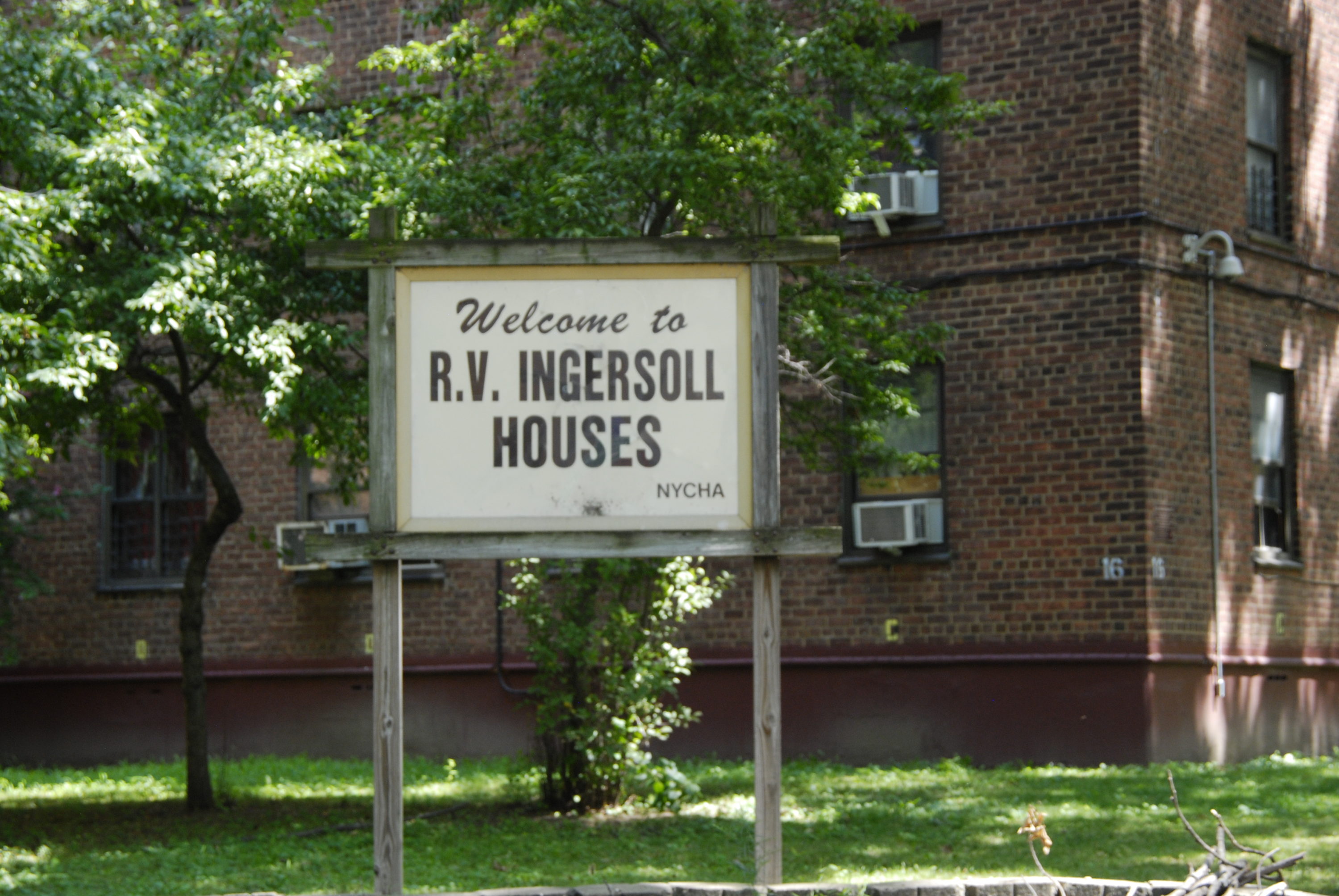Unprecedented NYCHA air-rights deal nears completion at Ingersoll Houses

NYCHA's Ingersoll Houses. Eagle file photo by Kelly Mena
A first-of-its-kind deal to sell the air rights at a Fort Greene NYCHA development is nearing completion after months of negotiation.
The deal would transfer nearly 100,000 square feet of building rights from the Ingersoll Houses to a yet-to-be-built private development next door. In exchange, developers would provide nearly $25 million for maintenance at Ingersoll as part of NYCHA’s new long-term strategy to leverage private funds for the repair of its beleaguered housing stock.
The development in question is a mixed-used residential tower on the corner of Tillary Street and Prince Street, slated to be built on what is now a self-storage facility.
